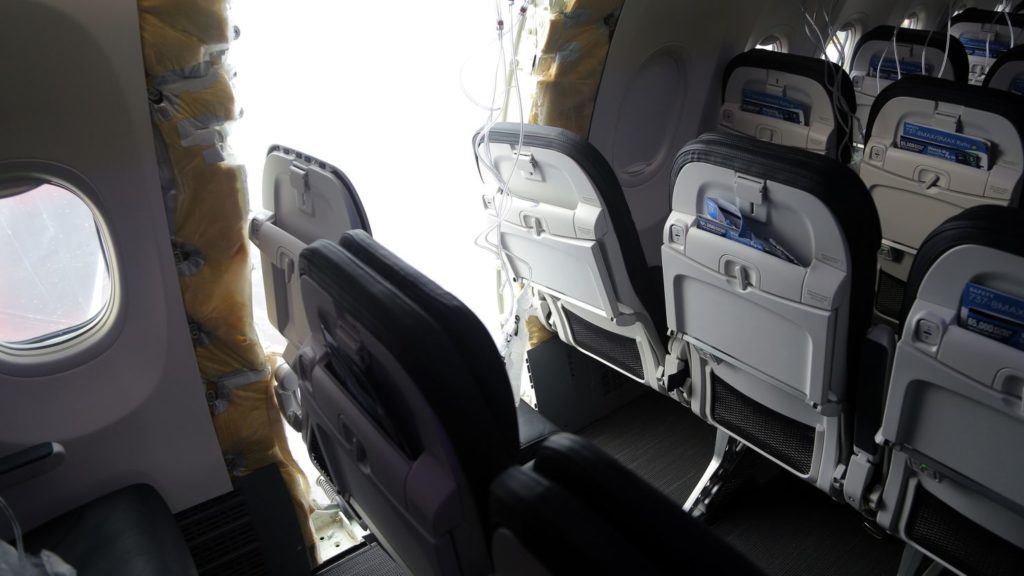Mistreated subcontractor ?
Behind the Boeing affair
By Dominique Jacquet

There were lots of emotions and some minor injuries on January 8 when the Alaska Airlines 737 MAX lost part of its fuselage at an altitude of 5,000 meters. The same incident at cruising altitude would probably have been dramatic, reminiscent of the two crashes of 2018 and 2019 which grounded Boeing’s star plane.
This part was previously produced in a factory that fell into the hands of Boeing during the acquisition of Rockwell, then which was sold to ONEX, a Canadian investment fund before making its return to the markets in 2006 under the name Spirit Aerosystems.
Boeing says it subcontracts everything that does not bring significant added value in order to optimize its financial profitability and maximize the return to shareholders, a much better use of funds than a mediocre industrial investment. Cumulative share buybacks represent $50 billion on the balance sheet in the 3rd quarter of 2023.
A subcontractor can invest and generate a certain profitability by generating economies of scale, by offshoring or by subcontracting itself. In some activities, it is not uncommon for the client and end consumer to find themselves facing the subcontractor’s subcontractor with all the efficiency that one can imagine.
In the case of Spirit Aerosystems, the situation is a little more complex, because the firm generates an operating loss of 0.5 billion USD and a negative net income of 1 billion, for revenues of around 5 billion. The relationship with the customer is, therefore, very fruitful, but for the customer.
The phenomenon of forced outsourcing, well inspired by the sacrosanct ROCE and the concept of fabless, has been widely documented. In fact, when calculating ROCE, we divide the operating profit by the operating investment. The logic is to bring out the denominator while maintaining, at best, the level of the numerator. This economic logic generally profoundly underestimates the concept of transaction cost developed by Williamson, whose more appropriate name is coordination cost. The customer-supplier relationship consumes time and energy, and suffers from additional costs generated by the absence of mutual trust and the asymmetry of information linked to it. When the power is on the customer’s side (often the case), the simplest thing is to impose on the supplier the cost reductions which make it possible to increase the ROCE and distribute the investment savings to shareholders. Unfortunately, this is often accompanied by less attention to operational safety, product quality and ethical supplier behavior.
To put it simply, Spirit AS’s losses were transferred to Boeing’s shareholders and the loss of quality to its customers.
How did the financial markets sanction this questionable behavior?
At the time of the first 737 accident in 2018, Boeing’s price went from $370 to $320, rising to $380 in March 2019, the date of the second accident, and then falling to $340… What really caused the price to fall was the Covid! In two months, Boeing will lose more than half of its value and will reach lows close to $100 per share. Gradual rise to $250 at the start of January 2024 and descent to $220. One could imagine that only Covid is affecting shareholder profitability. This would be forgetting that Boeing’s competitor is valued today 15% higher than its pre-Covid price. For Boeing, this would mean a price exceeding $400, or an additional market capitalization of $110 billion, compared to $50 billion in share buybacks and 346 victims. Value creation ?